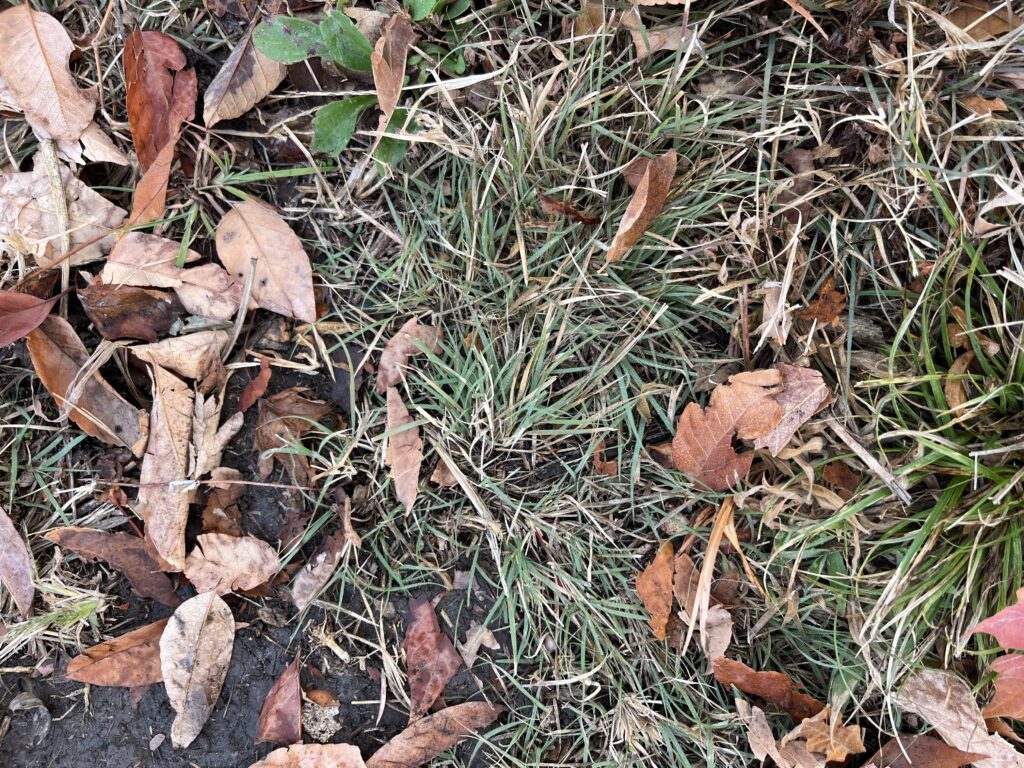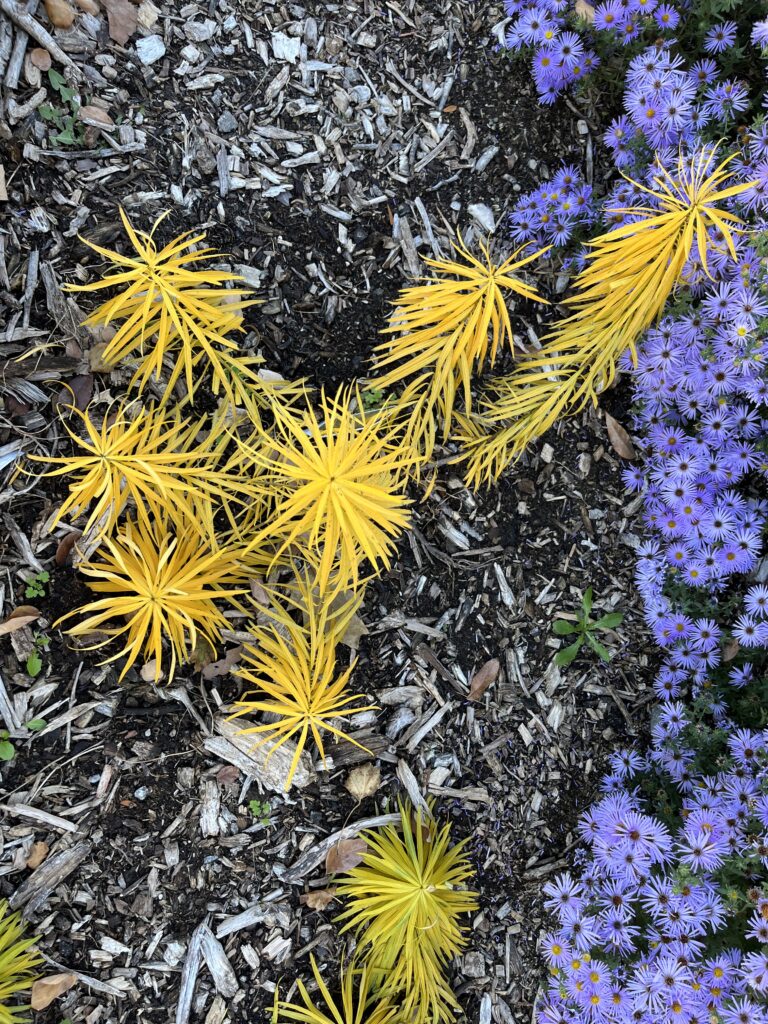As the growing season comes to a close, I like to take account of the garden before it goes completely dormant. Certainly, this has been a challenging year in the garden. The plants I installed last May in front of my house are still alive, but it took daily watering through the summer to keep them going. It is safe to say that without regular attention and water, I would have lost all of those tiny plants. I am still watering them twice a week.
Here at the Arboretum, I find the resiliency of the prairie and certain display beds encouraging. While they are under stress, these plants adapt well to the high and lows along with wet and dry conditions. I have also been monitoring the buffalograss experiment I started over two years ago in the fall of 2020.
Our Experiment
As a reminder, in the fall of 2020, we tried a new seeding technique with buffalograss. We had our area prepared and ready for planting. That November, we seeded the area with annual ryegrass and buffalograss seed. The ryegrass is a cool season grass that prefers cooler weather. Once it germinated, it held the soil through the winter while the buffalograss seed naturally planted itself with the freezing and thawing of the soil. The round buffalograss seeds did not germinate because soil temperatures were below 60 degrees.
The Next Year
In the spring of 2021, the buffalograss seed germinated as the soil temperatures warmed. By May, the new seedlings had started to spread under the canopy of the ryegrass growing from the previous fall. As the temperatures warmed into the summer, the annual ryegrass faded since it is a cool season grass and the buffalograss became more prominent. By the end of the summer, new small clumps of buffalograss established, slowly spreading but healthy.
Since Germination
We mowed the annual ryegrass weekly that first year. It is important to keep the canopy open so the sun could warm the soil allowing the buffalograss seeds to continue to germinate. Buffalograss takes two to three weeks to germinate. The seeded annual ryegrass expired on its own with warmer summer temperatures. As the ryegrass died, the roots of the ryegrass continue to hold the soil as the buffalograss spread slowly the rest of the summer.

UPDATE: Analysis and what I would do differently
I would deem this buffalograss experiment a success. Honestly, I thought the buffalograss would spread more over the past year, but there are many clumps sprinkled throughout the area that are getting larger. The additional costs to purchase annual ryegrass seed are offset by the time and water saved compared to the traditional seeding method.
We will be putting down a pre-emergent next spring to keep the crabgrass and other summer annuals from germinating. Some pre-emergent herbicides safe for use in buffalograss are Barricade (prodiamine), Pendulum Aquacap (pendimethalin), Dimension (dithiopyr), and Specticle (indaziflam). There are some nice clumps of buffalograss, but they are hampered by intense weed competition. Weed competition was aided by tillage (soil disturbance), and the backfill soil added along the new sidewalk, which was full of weed seeds.
I would only use this seeding method on smaller areas of less than 1000 sq/ft. In my opinion, larger areas that are properly prepared should be planted from seed in the summer before August 15th. We seeded a larger area this past summer to buffalograss using the traditional method and had good germination and coverage. Here are some other things I would do differently:
- Reduce the seeding rate of the annual ryegrass: Though the packaging recommends that you plant 3-4 lbs./1000 sq. ft. I would only seed 2-3 lbs./1000 sq. ft. The seeds will still germinate to hold the soil through the winter, but not be so dense that they shade out the buffalograss seeds in the spring.
- Plant buffalograss seed first and slightly cover it: I had some buffalograss seed float off the soil as I established the annual ryegrass seed last fall.
- Start the process earlier in the fall after the first freeze (October 15): It is better to establish annual ryegrass with slightly warmer temperatures, but not so warm that the buffalograss seed germinates.




